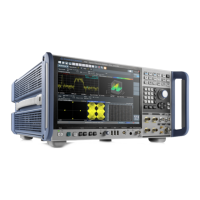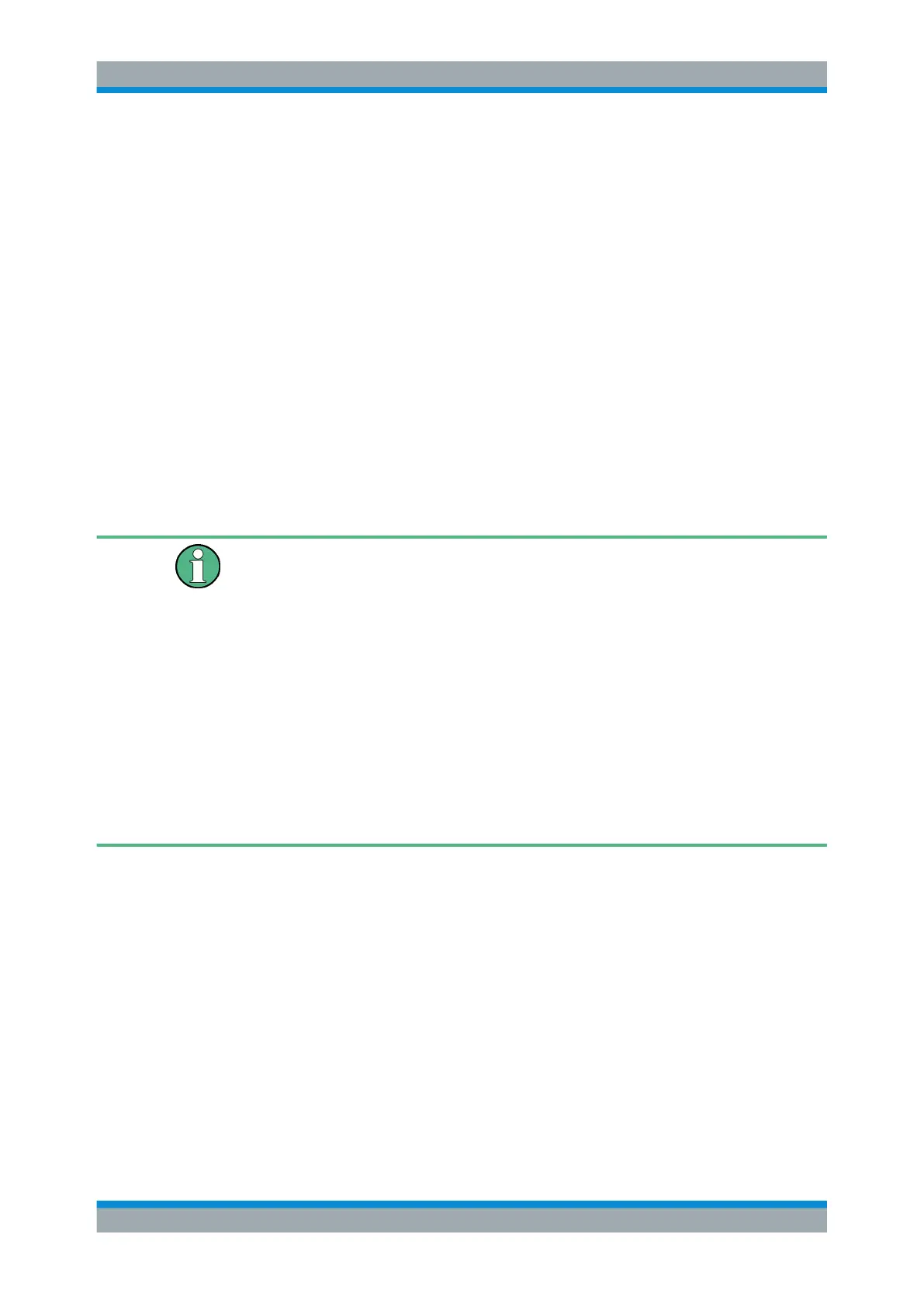Measurements and Results
R&S
®
FSW
248User Manual 1173.9411.02 ─ 43
This leads to the following combinations for overlapping ranges:
●
"MAX"+"MAX": maximum of the two limit lines is used
●
"MAX"+"SUM": maximum of the two limit lines is used
●
"SUM"+"SUM": sum of the two limit lines (calculated for linear powers) is used
●
"NONE"+"MAX"/"NONE"+"SUM": limit line (and parameters) of the "NONE"
range are ignored
●
"NONE"+"NONE": depends on the position of the overlapping ranges in relation to
the mid-frequency between the two neighboring sub blocks:
– Overlap is completely below the mid-frequency: limits and parameters of the
left sub block are used
– Overlap is completely above the mid-frequency: limits and parameters of the
right sub block are used
– Overlap crosses the mid-frequency: new subranges are created: one to the left
of the mid-frequency, one to the right of the mid-frequency. The left subrange
uses the limits and parameters of the left sub block, the right subrange uses
the limits and parameters of the right sub block.
Different RBWs in overlapping ranges
If different RBWs are defined for the overlapping ranges, the following parameters from
the range with the smaller RBW are considered for both ranges:
●
RBW
●
VBW
●
Attenuation
●
Reference level
●
Transducer
●
Filter type
●
(proportional) sweep time
In the range with the higher RBW, the following offset is applied to the limit line:
-10*log(RBW
large
/ RBW
small
)
Spectrum Emission Mask (SEM) Measurement

